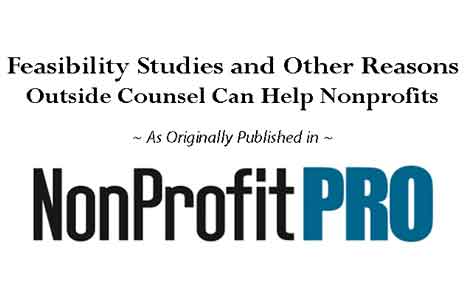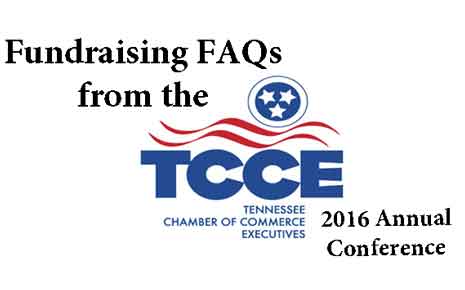This article was originally written for and published in the International Economic Development Council ‘ED Now’ newsletter. We are excited to make it available to non-IEDC members here for the first time.
There were 5.8 million job openings across the United States at the end of April, according to the Bureau of Labor Statistics.[1] That matches the all-time high set in July 2015. And with 77 million Baby Boomers in the process of retiring, this problem will get worse before it gets better.
Historically, most economic development organizations have not addressed workforce issues, choosing instead to focus on creating jobs and capital investment. After all, when new jobs are created, who doesn't benefit? New jobs equate to additional payroll, and those additional dollars are spread throughout communities on new car sales, apartment rents, mortgages, electricity usage, sales and property taxes, etc.
But doesn't a job opening possess the same potential? After all, a job announcement is only a job opening until someone is hired and starts spending their disposable income. Only then does the benefit described above start to occur.
If the definition of economic development includes wealth creation, filling these job openings should be a priority of EDOs. Let's assume those 5.8 million job openings carry an average wage of just $35,000 per year; simple math tells us we're missing out on over $200 billion in annual payroll. Talk about wealth creation! Those are dollars that could translate into new car sales, apartment rents, mortgages, electricity usage, sales and property taxes, etc., but are not.
Unfortunately, there is no single strategy that addresses this issue, and most agree there are few short-term solutions. In many cases job applicants simply don't possess the skill sets needed by employers. A two- or four-year degree would change this, but thanks to the ever-increasing cost of college, many cannot afford the education needed to qualify for these jobs. But what if we removed that obstacle? What if all the high school graduates in your community could go to college for free? A Promise program does exactly that.
The Kalamazoo Promise started in 2005 when a group of anonymous donors created and funded an education endowment. They 'promised' students who attend Kalamazoo Public Schools from kindergarten through high school graduation a full-tuition scholarship to any of Michigan's public colleges or universities. In the first nine years of the program, the Kalamazoo Promise has awarded over $54 million to nearly 3,300 graduates.
Not surprisingly, word of the Kalamazoo Promise spread, and today dozens of communities across the country offer their own versions. What impact have they had? The W. E. Upjohn Institute for Employment Research and Western Michigan University decided to determine that and researched Promise initiatives in Kalamazoo, Pittsburgh, Hammond, El Dorado, Syracuse, Arkadelphia, New Haven, and Buffalo. Researchers compared data in these eight communities with 120 matched areas. While it's difficult to illustrate direct causality, the inferred results are impressive.
Across the board, Promise programs attract families to their communities because they either don't have to save for college or they have to save considerably less. According to SavingForCollege.com, four years at the average public university starting in 18 years is projected to cost $168,000 for tuition, fees, and room and board. Assuming the average family covers half of this expense and finances the other half with college loans to be paid back by each child, a family would need to save $2,200 per year from birth. With an average of two children per family, that's $4,400 per year, but what if that was no longer an issue? That's an additional $4,400 per family that could be spent in your community on a nicer car, a bigger house, dining out more often, etc.
It's no wonder that so many families are moving to Promise communities. According to Promise Nation by Michelle Miller-Adams[2]:
- Following decades of decline, enrollment in the Kalamazoo Public Schools grew by 25% between 2005 and 2013.
- The college enrollment rate for graduates of the Denver Public Schools rose from 56% to 86% between 2007 and 2012, while the college retention rate reached 79 percent for low-income minority students.
- The high school graduation rate in the Pittsburgh Public Schools rose from 63% to 69% in the six years after the Pittsburgh Promise was introduced in 2008, while the college enrollment rate increased from 58% to 68%.
- For graduates of the El Dorado School District, the college enrollment rate increased from 65% to over 90% between 2006 and 2013; 91% of freshmen completed their first year of college.
Further, the population of all households in the local labor market of these eight test communities from 2005 to 2013 increased by 1.7%, while those households with children increased by 2.5%. However the increase of households with children in Promise communities was 6.0%.
Increased population understandably impacts housing prices. The inferred property value increase of 1% for Kalamazoo County increased property values by about $163 million. Compare that to the $11 million annual cost of the Kalamazoo Promise.
Increased population also impacts the local labor market by a similar percentage. This translated into about 1,900 new jobs in Kalamazoo County. Clearly Promise programs are an economic driver.
But they're also a great long-term workforce tool. In fact, we just completed a campaign earlier this year focused exclusively on the creation of a Promise program to address workforce issues.
When we conducted our feasibility study for the Greenwood Promise in Greenwood, SC, an initiative driven by the Greenwood Partnership Alliance, there were 1,321 job openings in this community of 70,000. Many of these job openings require postsecondary degrees. In fact, 56% of South Carolina's jobs will require post-secondary education by 2018, yet in 2012, only 33.5% had at least an Associate's Degree.
Unfortunately, college affordability is an issue. The average tuition & fees for state-supported colleges and universities is about 25% of the median family income in South Carolina. Only a small percentage of Greenwood residents can afford to pay for their children's higher education, and many do not qualify for tuition assistance. The Greenwood Promise aims to change that.
The Greenwood Promise 'promises' that any child who graduates high school in Greenwood County can attend college. We raised nearly $4.4 million via an initial capital campaign to help cover in-state tuition and fees. Phase II will begin in a few years.
Local graduates will first attend Piedmont Technical College to earn a two-year degree, and should they decide to continue their education, they are welcome to attend any in-state school to earn a four-year degree, with tuition and fees covered at both institutions. The long-term benefits of this initiative are many:
- Over the next five years, they expect to make a dent in the number of the jobs currently open.
- Roughly 25% of kids who enroll in a four-year institution leave without a degree, returning home with thousands of dollars of debt but only qualified to get a minimum wage job. By earning their two-year degree first, those students can earn $30,000 to $40,000 or more per year, should they eventually choose not to pursue a four-year education.
- Greenwood is a rural community, and major employers have struggled to recruit professionals to town. The Greenwood Promise provides a critical recruitment incentive to these employers if you don't have to save for your children's education, you can buy a bigger house, drive a nicer car, take nicer vacations, etc.
- Site selection consultants confirm that an available, affordable, and skilled workforce is playing a much more significant role in their client's decisions in terms of where they open new facilities. Local business and community leaders believe the Greenwood Promise will provide a competitive edge for them when competing for future relocation prospects.
We estimate there are 60-70 'promise programs' in existence across the country. Some of these initiatives are 'last dollar' that cover expenses once all scholarships have been applied while others are 'first dollar,' something that's especially helpful for low-income students. Some only focus on two-year education while others focus more on four-year education. Almost all include formulas to prorate the Promise's financial support based on the length of time a family has lived in the community.
Although every promise program is different, one thing is consistent their numbers are growing. There were only a few dozen five years ago, but I suspect there will be more than 100 a few years from now. We just launched a capital campaign to fund the program in Lynchburg, VA (Beacon of Hope), and we're currently wrapping up a feasibility study for the Newport Promise in Newport, KY.
The perfect storm of skyrocketing college costs and retiring Baby Boomers is creating a labor shortage in our country like we've never seen. Those communities developing proactive workforce recruitment and retention strategies are creating a long-term sustainable competitive advantage. Promise programs are the perfect addition to their arsenal. When will you create yours?
[1] http://www.bls.gov/news.release/pdf/jolts.pdf
[2] http://www.upjohn.org/sites/default/files/promise/brochure-4-pg.pdf







